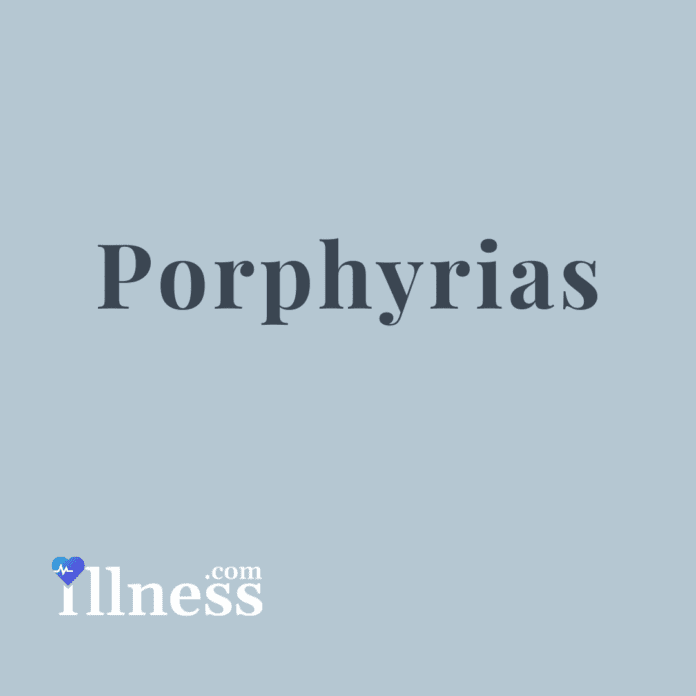Overview Of Porphyria
Porphyria is a group of rare inherited disorders. An important part of hemoglobin, called heme, is not made properly. Hemoglobin is a protein in red blood cells that carries oxygen. Heme is also found in myoglobin, a protein found in certain muscles.
Commonly Associated With
Porphyria cutanea tarda; Acute intermittent porphyria; Hereditary coproporphyria; Congenital erythropoietic porphyria; Erythropoietic protoporphyria
Causes Of Porphyria
Normally, the body makes heme in a multi-step process. Porphyrins are made during several steps of this process. People with porphyria are lacking certain enzymes needed for this process. This causes abnormal amounts of porphyrins or related chemicals to build up in the body.
There are many different forms of porphyria. The most common type is porphyria cutanea tarda (PCT).
Drugs, infection, alcohol, and hormones such as estrogen may trigger attacks of certain types of porphyria.
Porphyria is inherited. This means the disorder is passed down through families.
Symptoms Of Porphyria
Porphyria causes three major symptoms:
- Abdominal pain or cramping (only in some forms of the disease)
- Sensitivity to light can cause rashes, blistering, and scarring of the skin (photodermatitis)
- Problems with the nervous system and muscles (seizures, mental disturbances, nerve damage)
- Attacks can occur suddenly. They often start with severe abdominal pain followed by vomiting and constipation. Being out in the sun can cause pain, sensations of heat, blistering, and skin redness and swelling. Blisters heal slowly, often with scarring or skin color changes. The scarring may be disfiguring. Urine may turn red or brown after an attack.
Other symptoms of porphyria include:
- Muscle pain
- Muscle weakness or paralysis
- Numbness or tingling
- Pain in the arms or legs
- Pain in the back
- Personality changes
Attacks can sometimes be life-threatening, producing:
- Low blood pressure
- Severe electrolyte imbalances
- Shock
Exams & Tests
Your health care provider will perform a physical exam, which includes listening to your heart. You may have a fast heart rate (tachycardia). The provider may find that your deep tendon reflexes (knee jerks or others) do not work properly.
Blood and urine tests may reveal kidney problems or other problems. Some of the other tests that may be done include:
- Blood gases
- Comprehensive metabolic panel
- Porphyrin levels and levels of other chemicals linked to this condition (checked in the blood or urine)
- Ultrasound of the abdomen
- Urinalysis
Treatment Of Porphyria
Some of the medicines used to treat a sudden (acute) attack of porphyria may include:
- Hematin given through a vein (intravenously)
- Pain medicine
- Propranolol to control the heartbeat
- Sedatives to help you feel calm and less anxious
Other treatments may include:
- Beta-carotene supplements to lessen photosensitivity
- Chloroquine in low doses to reduce levels of porphyrins
- Fluids and glucose to boost carbohydrate levels, which helps limit the production of porphyrins
- Removal of blood (phlebotomy) to reduce levels of porphyrins
Depending on the type of porphyria you have, your provider may tell you to:
- Avoid all alcohol
- Avoid drugs that may trigger an attack
- Avoid injuring the skin
- Avoid sunlight as much as possible and use sunscreen when outside
- Eat a high-carbohydrate diet



